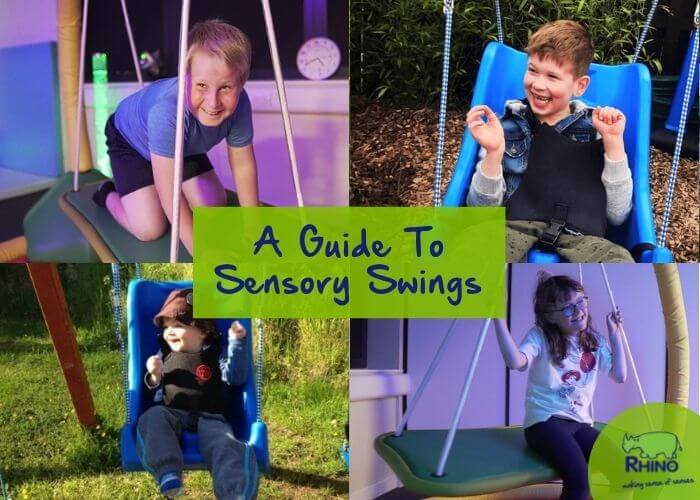Is there anything better than swinging in the sunny summer sunshine? Legs swinging, hair blowing in the wind, with a big smile on your face as you woosh forwards and backwards.
Swinging is a great way for us to have fun, get active, and develop our senses. Introducing a swing into your sensory garden, room, or home is a great way to actively develop motor, vestibular and proprioceptive senses that will help you feel more comfortable and confident in your body.
There are lots of different types of swings and swing frames on the market, and it can be a little bit difficult to know where to start. To help you out, our Sensory Experts have put together this handy guide to help you learn more about swings, their benefits and which one might be best for you and your sensory environment. Keep scrolling to find out more 😊
Benefits of Sensory Swings
- Vestibular Input: The therapeutic motion of swings helps to stimulate and develop our vestibular systems – which help our balance!
- The simple swinging motion is a passive way of developing vestibular skills. Because of this, swinging is particularly beneficial for people with physical disabilities, as they wouldn’t usually be able to create or experience vestibular stimulation.
- Therapeutic Relaxation: Calming swinging back and forth can help your body relax.
- It’s a pleasant way of calming down, relaxing, and feeling more connected to our senses and bodies.
- Spending Time in Nature: Most of our swings can be used outside so that you can swing and connect with nature.
- It’s a great excuse to get some fresh air and swing in the sun. Perfect for sunny summer days.
- Sensory Integration: Swings are an important part of sensory integration rooms as they help you to connect your senses and feel more like one in your body.
- Swings can be used alongside other sensory resources to develop skills in Sensory Integration rooms.
- Lay down on a platform swing and try to grab objects from underneath you.
- Coordinate your movements to catch a ball whilst swinging.
- Try to throw a ball at a target whilst swinging.
- Swings can be used alongside other sensory resources to develop skills in Sensory Integration rooms.
- Sensory Exercise: Some of our more active swings are great for helping you achieve a fun dose of daily exercise.
-
- Moving your legs and bodies in sync to get the swing moving, and tensing your core muscles to stay firmly on the swing seat, is a simple and effective way of getting active.
-
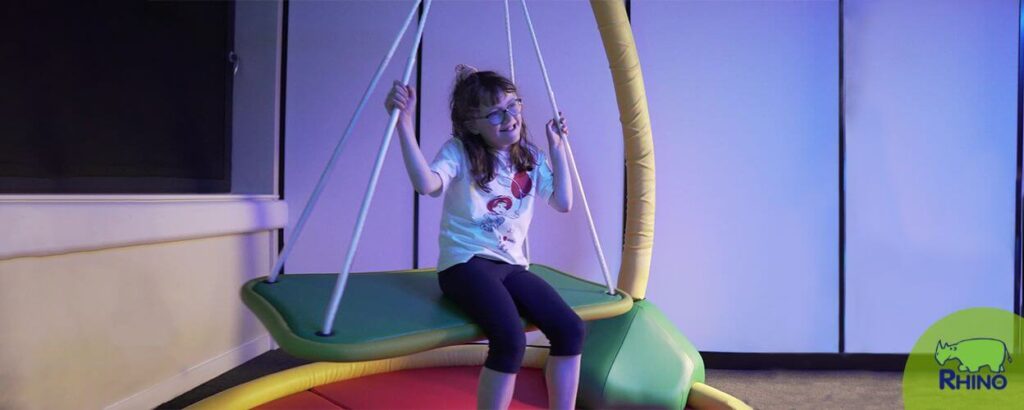
The Key Skills You Develop While Swinging
- Proprioceptive – Feeling comfortable and in control of how your body moves.
- Vestibular – Sense of balance, movement and position.
- Gross Motor – Development of larger muscle systems that help your body move.
- Spatial Awareness – Knowing where your body is in space in relation to other people and objects.
- Sensory Integration – How your body processes, integrates and organises information from your senses.
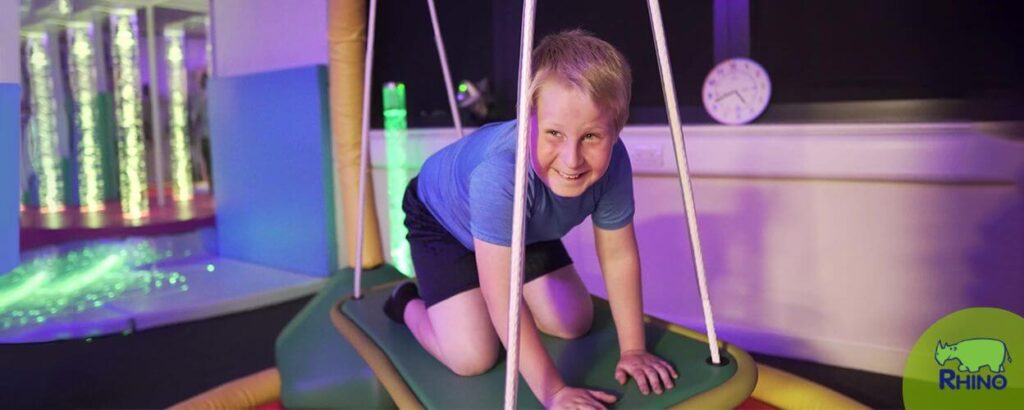
Which Swing is Best for Me?
Swings come in all shapes and sizes – alongside traditional swing seats, you can also swing on platforms, nets and in cosy cocoons.
Each swing type brings its own benefits; some are better suited for certain sensory preferences, disabilities, or spaces.
Our sensory experts have come together to discuss their swing recommendations so that you can find the best one for you!
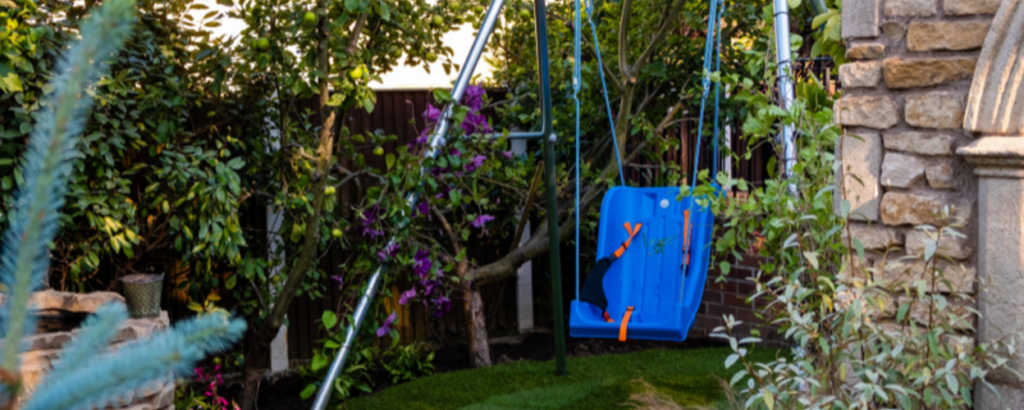
Swing Seats
The Best Swing for Your Sensory Garden
- Belizze Hanging Chair: Our colourful Belizze Chair is perfect for sunny summer days and relaxing sensory swinging. It has a cosy cushioned support that provides comforting proprioceptive feedback, helping users to feel comfortable and confident while they sit and swing.
Best Swing for Sensory Rooms
- Sling Swing: Part sensory den, part weighted blanket, part swing – the soft and stretchy Sling Swing moulds around your body, creating a calming hug-like effect and a personal space for you to explore your senses. Climb inside to read a book, have a quick nap, or go for a relaxing swing session; it’s a useful resource for bedrooms or calming rooms.
The Best Swing for Sensory Integration Rooms
- Swing Platform: Their simplicity and adaptability made our Swing Platforms perfect for Sensory Integration Rooms. The large platform gives users a stable place to sit, lie down or stand on top – from which they can develop vestibular, proprioceptive and motor skills.
- See the swing platform in action in our case study video at More Rehab.
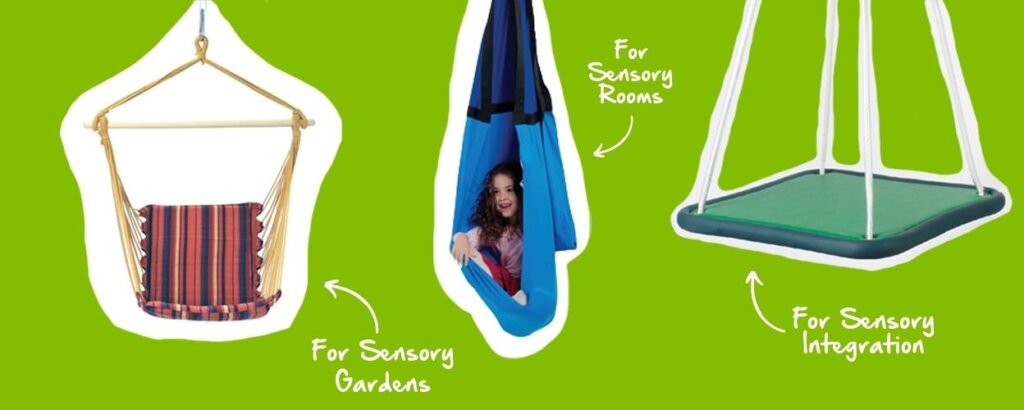
Best Swings for Adults
- Swinger: Sit back and unwind in our cosy Swinger. Its adjustable neck pillow, footrest and armrests provide comforting proprioceptive stimulation. The swing’s shape and design are made for adults who’d like to enjoy the therapeutic benefits of swinging.
The Best Swings for Kids
- Taco Swing: The Taco Swing is great for kids. Its strong and stretchy material lets them explore their senses whilst they let their imagination run wild. Kids can actively jump up and down and use the swing as a trampoline; lie down and let the material wrap around them, creating a calming proprioceptive pressure, before they swing back and forth like they’re flying; or they can simply stand and put their core motor skills to the test to swing the swing.
Best Swing Seats
- Full Support Seat: If you’re looking for a classic swing seat, then we’d recommend our Full Support Seats. They come in three sizes and are made for people of all ages to enjoy safe sensory swinging. The seat has a harness vest attached to it to provide support for people with disabilities so they feel safe and secure whilst swinging.
- We’d recommend our Full Support Swing Seats for sensory integration rooms and sensory gardens, as you need a nice open space to swing safely.
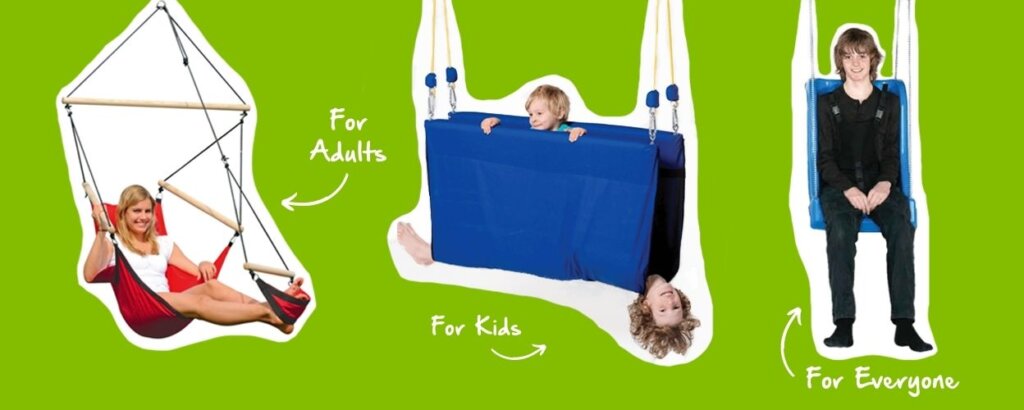
Swing Frames
Swing Frames for Sensory Gardens
- Single Swing Frame: The single swing frame is an easy-to-install versatile swing. It’s just the right size for most back gardens and has a weight limit of 200kg, so it can safely swing adults and children.
- The swing frame is compatible with most of our swing seat range so that you can always swing in style.
Best Swing Frames for Sensory Rooms
- C Frame: The C Frame comes as an all-in-one ready-to-use swing frame, complete with a triple-point suspension bracket and safety mats – all you need is to choose which swing you’d like to swing from.
- Its curved shape means it can easily fit into the corners of rooms, taking up less space and giving you more room to explore your senses.
- The triple suspension point gives you full swinging freedom. Swing back and forth, side to side, or round and round – developing your vestibular senses!
- The frame is protected and padded with safety foam so that it’s safe for sensory play environments.
Swing Frames for Sensory Integration Rooms
- Custom Free Standing Beam Frame: For its strength, number of suspension points, and adaptability, we’d recommend our bespoke free-standing beam frames for Sensory Integration spaces.
- You can comfortably hang almost all of our sensory swings from the beams, using the different suspension points to create unique ways of swinging.
- The legs of the frame keep to the walls of the room, giving you lots of space underneath the frame for sensory integration activities.
- It’s ideal for rooms with walls and ceilings that aren’t suitable for suspension.
- Each beam is made to measure and designed so that you can make the most of your sensory space.
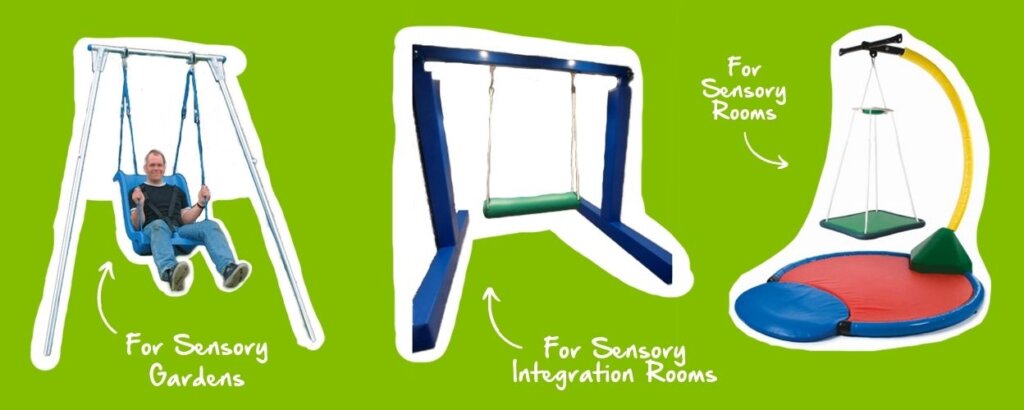
More Information
- Get in touch: Find out more about our swings and receive personal advice from our sensory team.
- Explore the full collection: Our swings collection is filled with even more swings, frames and resources designed to stimulate and develop your vestibular senses.
